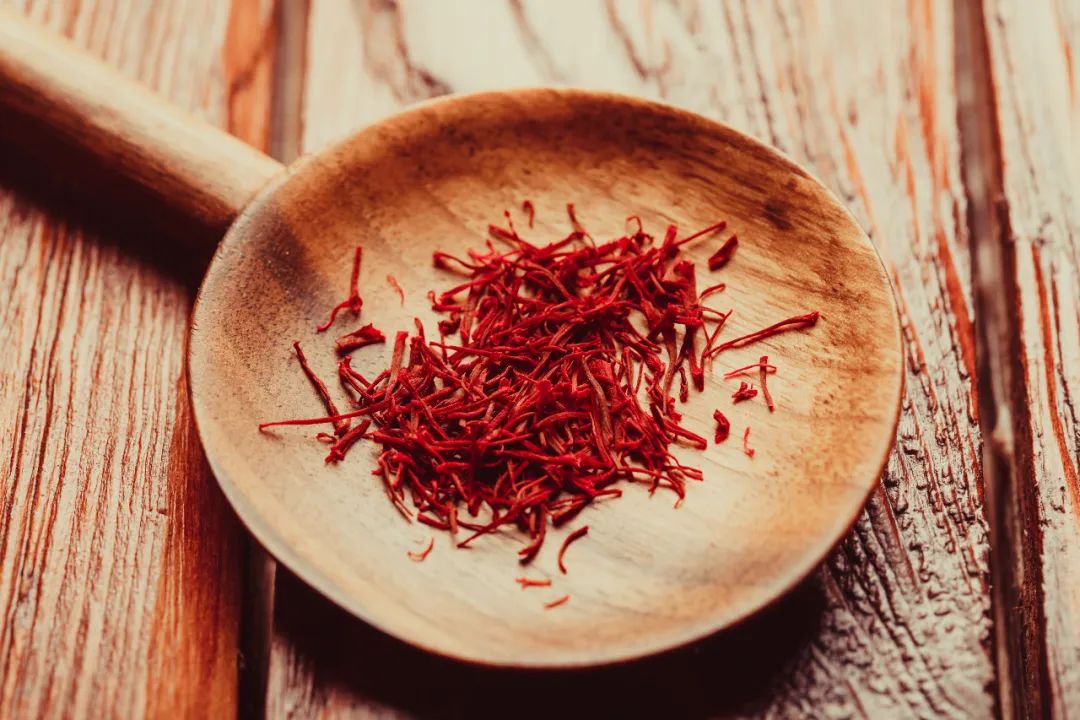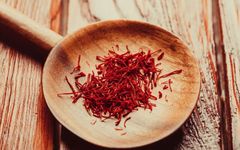

 Although most people may not be very familiar with safflower, it is one of the earliest cultivated plants by humans, with a cultivation history dating back to 1900 BC. Safflower likely arrived in China during the Western Han Dynasty. The “Golden Coffer” from the Eastern Han Dynasty and the “Essential Techniques for the Common People” from the Northern Wei Dynasty both refer to safflower as “red-blue flower”, because “its flowers are red, and its leaves resemble blue, hence the name blue”. Safflower is not only a dye but also a commonly used medicinal herb in Traditional Chinese Medicine (TCM)
Although most people may not be very familiar with safflower, it is one of the earliest cultivated plants by humans, with a cultivation history dating back to 1900 BC. Safflower likely arrived in China during the Western Han Dynasty. The “Golden Coffer” from the Eastern Han Dynasty and the “Essential Techniques for the Common People” from the Northern Wei Dynasty both refer to safflower as “red-blue flower”, because “its flowers are red, and its leaves resemble blue, hence the name blue”. Safflower is not only a dye but also a commonly used medicinal herb in Traditional Chinese Medicine (TCM) 1What is Safflower?
1What is Safflower?
Safflower, also known as “red-blue flower” and “thistle safflower”, belongs to the Asteraceae family of dicotyledonous plants. It has a pungent taste, is warm in nature, and enters the Heart (Xin) and Liver (Gan) meridians.
It has the effects of invigorating blood circulation, regulating menstruation, and alleviating pain. It is used for conditions such as amenorrhea, dysmenorrhea, retained lochia, abdominal masses, chest pain, abdominal pain due to blood stasis, stabbing pain in the chest and hypochondrium, traumatic injuries, and swelling and pain from sores.
According to the “Compendium of Materia Medica”: it invigorates blood, moistens dryness, alleviates pain, and reduces swelling.
According to the “Kaibao”: for postpartum blood stasis and mouth lock, abdominal pain from retained blood, and fetal death in utero, it should be boiled with wine and taken. It is also indicated for toxic reactions.
According to the “Bencao Fengyuan”: blood is generated in the pericardium, stored in the liver, and belongs to the Chong and Ren meridians. The juice of safflower is similar to it. Therefore, it can promote blood circulation in men, regulate menstruation in women, invigorate blood, detoxify, and reduce redness and swelling.
According to the “Supplement to Good Recipes for Women”: for treating heat diseases with fetal death or retained placenta, safflower juice boiled with wine can be taken in two or three cups for treatment.
Modern medical research has found that safflower has the effect of invigorating blood circulation and resolving stasis. Additionally, safflower contains flavonoids, polysaccharides, lignans, pigments, volatile oils, dietary fiber, vitamins, trace elements, and adenosine, among other chemical components. It has high medicinal value and a wide range of effects.

 2Main Functions of Safflower
2Main Functions of Safflower 1. Invigorating Blood and Resolving Stasis
1. Invigorating Blood and Resolving Stasis
Safflower is a commonly used herb in gynecology, with effects of invigorating blood circulation, resolving stasis, and alleviating pain, especially effective for delayed menstruation and dysmenorrhea.
There is an interesting account in ancient texts. In the “Night Talks by the Boat Window” by Gu Wenjian from the Song Dynasty, it is recorded that a woman surnamed Xu was critically ill after childbirth, and her family invited the famous doctor Lu Riyuan for treatment. At that time, the patient was on the verge of death, with only a slight warmth in her chest. After examining her, Lu Riyuan said: “This is a case of blood stasis; quickly buy several tens of pounds of safflower to be effective.” The family bought the required amount, and Lu boiled the safflower in a large pot, poured it into three wooden barrels, and placed a window frame on top for the patient to lie on and inhale the medicinal vapor. After a while, the patient’s stiff fingers began to move; after about half a day, she regained consciousness and escaped danger. When asked about the reason, Lu Riyuan said: “It is because safflower invigorates the blood.”
2. Regulating Endocrine Function
Safflower has a certain regulatory effect on the body’s endocrine system. It not only accelerates blood circulation but also enhances the oxygen-carrying capacity of red blood cells and improves the function of various endocrine organs, preventing endocrine disorders and enhancing human constitution.
3. Cardiovascular Protection
Safflower contains a certain amount of cardiac glycosides, which can enhance heart function, purify the blood, prevent increases in blood pressure and blood lipids, and improve microcirculation in the myocardium and brain tissue, thus having effects of lowering blood pressure and lipids and preventing cerebral thrombosis.
4. Unblocking Meridians
Safflower can also unblock meridians, improving the health of muscles and bones. It has significant alleviating effects on numbness of limbs and stroke-related paralysis caused by blocked meridians, as well as subcutaneous bruising. Drinking safflower-infused medicinal wine can significantly relieve symptoms, especially for those experiencing limb pain or blood stasis pain.
5. Nourishing Qi and Blood
The trace elements in safflower can accelerate the synthesis of hemoglobin in the body and promote the regeneration of red blood cells. It can nourish Qi and blood, alleviate physical weakness, and significantly reduce symptoms of iron-deficiency anemia.
6. Beauty and Skin Care
Safflower can also regulate endocrine function, accelerate the metabolism of toxins in the body, prevent various harmful substances from damaging human skin, and prevent the accumulation of pigments on the skin surface, nourishing and softening the skin, leading to improved skin quality.
7. Anti-Inflammatory Effects
Safflower also has certain effects in eliminating inflammation. Various active components in safflower can influence immune function, antagonize platelet-activating factor receptors, increase nitric oxide levels in the body, eliminate oxygen free radicals, and antagonize various inflammatory factors, showing significant anti-inflammatory effects.



